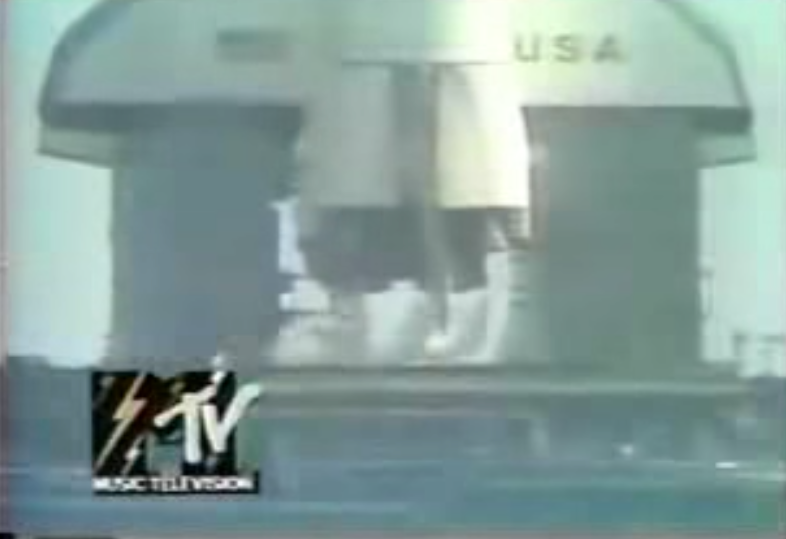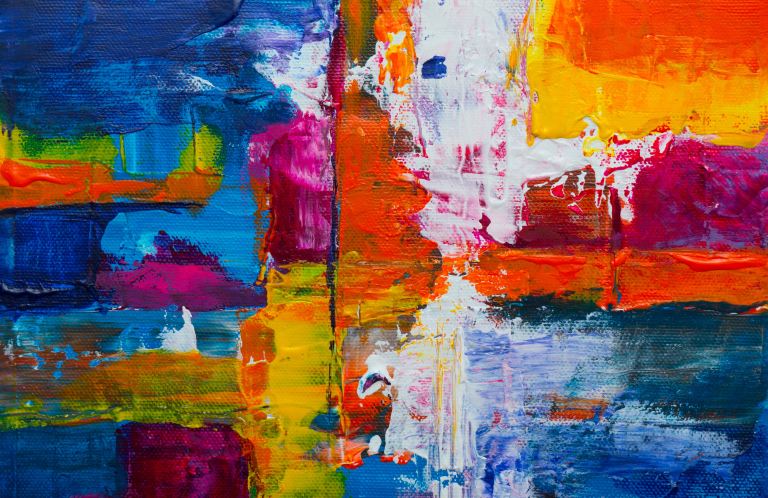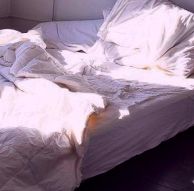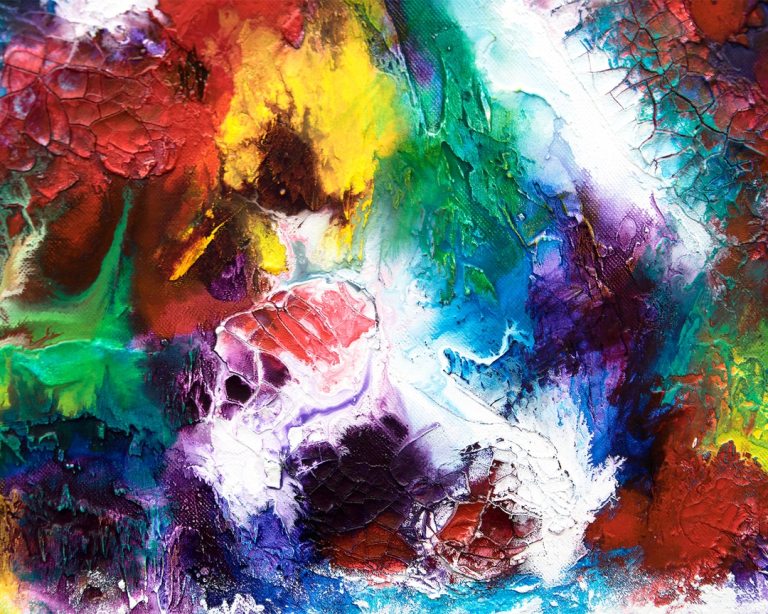Why ‘Low Information’ Art Matters
Information has, in the first 15 years of this millennium, become more of a prized commodity than even the most prescient early critics of the Information Age could have predicted.


Around the time that video art was first being recognized as a viable art form, genre leader Bill Viola made a simple but enduring statement on how that form diverged from the aims of commercial TV. Namely, video allowed creators to show “less and less information in more and more time,” thus flipping the ethos of commercial advertising on its head (this would especially be true for MTV, which spent most of its formative years simply showing commercial advertisements for records in between commercials for other products.) Viola’s thesis – that a reduction in audio-visual information could, paradoxically, be more meaningful than the most highly condensed onslaughts of imagery – was hardly his unique intellectual property. Nor was it even new when Mies van der Rohe sketched out the intentions of Modernist architecture with the maxim “less is more.” Yet these sentiments’ lack of newness hasn’t diminished their value as road maps for creative individuals in the 21st century: in a way, the concept of “less information in more time” is more necessary than ever as a balancing agent.
Information has, in the first 15 years of this millennium, become more of a prized commodity than even the most prescient early critics of the Information Age could have predicted. As has been the case for more traditional commodities, the public imagination is taken with a good vs. evil struggle over proper ethical use of that resource: in this case, between exploitative information hoarders such as the NSA and daring “leakers” like Edward Snowden. But the heroic cachet associated with figures like Snowden, and his special case of challenging mass surveillance, also feeds into a social climate where any complete disclosure of information becomes a progressive or liberatory act. Take for example the Quantified Self movement, effectively launched by Kevin Kelly and Gary Wolf via a New York Times manifesto printed in 2010, who believe that a host of personal and social problems can be eliminated with the aid of rigorous, digital “self-tracking” techniques. Armed with a steadily growing arsenal of analytics apps, the Q.S. movement seemingly operates under the premise that there is no such thing as a trivial data point, and that the more of these data points are continually logged and measured, the closer we are to a life-altering epiphany. Every disclosure of a personal fact – be it your body weight, hours of sleep per night, or number of sexual encounters over a week – has the potential to unlock some sublime truth about the human condition. Recording and subsequently publicizing a total account of your personal data is a constructive and not an obsessive act, and, contrary to what Korzybski told you, the “map” really is the “territory”.
One bumper sticker-ready sentiment of Wolf’s -“you might not always have something to say, but you always have a number to report” – was taken up by the serious avant-garde art world well in advance of the Quantified Self movement’s founding. Conceptual Art in particular, based partially on the idea that linguistic critiques should replace material objects as the raw material of art (see especially Sol LeWitt’s famous claim that “the idea becomes the machine that makes the art”), has often been seen as the Information Age art form par excellence. Among its accomplishments were pieces that re-imagined statistical surveys as artworks: Hans Haacke’s 1969 piece Visitor’s Profile, for example, was developed completely from demographic analysis of politically-charged survey questions asked of the visitors to an exhibition fittingly named Information. Then there are those more recent projects that might fall under the “catalog as artwork” designation: salient examples of this tendency include Ralf Wehowsky’s conceptual CD An Archivist’s Nightmare (which features the artist noting the staggering number of new arrivals to his record collection) or the 2001 work Soliloquy by “conceptual writing” maven Ken Goldsmith (a work in which he transcribed every word that he spoke over a the course of a week.) Or, maybe more relevant still, there is the self-generating poem “Status Update” from Darren Wershler and Bill Kennedy, which was composed entirely from samples of banal social grooming on Facebook. While you could certainly make the argument that these kinds of works are satirical jabs at the kind of total information disclosure endorsed by the Quantified Self movement, or just attempts to de-legitimize bureaucratic complexity by reframing it as “art”, they can be too easily mistaken for symptoms of the social illness they critique rather than a homeopathic treatment against it.
Put another way, the main problem I have with much conceptual art and conceptual writing is that the valuable messages you could possibly take away from it – i.e. that we live in an era of analytic overkill and/or digitally-driven narcissism – requires even more of those things to be produced in order to ostensibly fight against them. If fighting fire with fire is the game here, then information-as-art projects certainly do tend to generate a sizable amount of secondary p.r. documentation in the form of explanatory press releases, exhaustive artist bios and of course sympathetic interviews which can be interpreted as stand-alone art performances in their own right (e.g. the marathon interview sessions hosted by superstar curator Hans-Ulrich Obrist.) When those secondary p.r. materials and the heavily text-based artworks both reach the same fever pitch of self-analysis and verbalization, it becomes difficult to really tell which is the advertisement for the art, and which is the art proper. With all this in mind, LeWitt’s estimation of the artist as “a clerk merely cataloguing the results of his premise”[i] seem spot-on, as the functions of the artist synchronize with that of the administrative assistant.
Less “information-intensive” forms of art are not under as many obligations to throughly explain themselves, and are instead free to focus on how such supposedly non-informative phenomena as silence, noise, perceptual distortion and the occasional dream function for the evolution of consciousness. Working closely with these materials often involves the exhilarating challenge of finding meaning in a raging sea of sensory chaos, and there’s always the option of just joyfully submitting to that chaos without finding any distinct meaning whatsoever. Creators of information-as-art could argue that their work also brings this non-didactic quality to the table, but I still believe there are fundamental differences in the approach to experience in general. One of the most significant is the belief, shared among many of the original school of Minimalist artists, that a good deal of experience does not need to be verbalized at all to be meaningful – let alone filed, cataloged, and updated in real-time via a networked array of self-tracking apps.
I could have landed on any of a large number of artists who embody the better tendencies of a low-information art, but Viola seemed like a good choice – if, for no other reason, because he steers clear of the stereotype of the artist as a kind of off-the-grid recluse; the type of person you might expect to find railing against “chemicals” without making any distinction between which of those substances might be harmful and which are essential. Viola, like his erstwhile mentor David Tudor, made concerted efforts to set up dialogues between technology and nature, rather than to pit them against one another in some interminable struggle. When he speaks of “revealing [the] common forms and underlying principles” shared between “the world inside of of electronic circuits and the world outside in the forests and rivers”[ii] he hints at a larger project of seeking vitality in all things. Notably, and in contrast to much information-as-art, Viola’s work sees silence as being just as revealing as intense information disclosure (maybe moreso), and this revealing of the vast “something” lurking within “nothing” is an act that links him with the more interesting and effective proponents of sound art, installation art and psycho-acoustic music. Like Tudor and other colleagues such as Alvin Lucier, Viola understood that sound was a physical and not an ethereal phenomenon, and enlarging its physical qualities provided a valuable addition to his visual attempts at manipulating perception of time via information reduction: his own term for this process of fusing audio physicality with other forms of heightened environmental awareness was “field perception.”
When Viola casts a critical eye on “incessant distractions, misleading appearances and [the] busy-ness of everyday life” – all of which deny the “primordial, natural state of all human beings,”[iii] he seems to be referring back to this need for humans to be curious surveyors of their whole external environment rather than merely documenters and quantifiers of themselves. The film critic Gene Youngblood, a vocal early supporter of Viola’s, was fascinated by the variety of “what if?” scenarios that this premise led to:
At times [Viola’s] reflections have the flavor of thought experiments devised by a scientist caught up in wild hypotheses, fascinated by metaphysical what-ifs: what if we could surf on a soundwave at the speed of sound? (The Space Between the Teeth). What if a vase could release the energy of life? (The Morning After the Night of Power). What does a rock look like in slow motion? (Hatsu-Yume). How does the world appear from a moth’s point of view? (Sweet Light). What if we could see the limits of the visible? (Migration and Chott el-Djerid).[iv]
As this mini-inventory hints at, the world of perceptual extremes is explored in such a way that supposedly static or imperceptible entities are shown to have their own communicative ability. And those who read too much of a “spiritual” quest into Viola’s work shouldn’t be turned off by it, since studies in cosmology and particle physics confirm the presence of some sort of substance or activity within nothingness: even in those unfathomably huge portions of the universe devoid of matter, there is still the presence of gravitational waves. And despite the immense empty space that exists between atomic nuclei and the electrons that circle them, they are also held together by forces that suggest something other than an inactive void.
Over fifty years ago, Susan Sontag lamented how certain forms of contemporary art enabled a “hypertrophy of the intellect… at the expense of energy and sensual capability.”[v] Indeed, those art forms based on information saturation do seem to sacrifice a great deal of physicality, resonance and depth for the ability to lift the veil on the workings of linguistic communication. This is not to say that the latter act has no redeeming value, or that works with this focus can’t be engaging on many levels. Furthermore, there is plenty of art that simultaneously massages the senses and lights up the intellect. So, instead of imagining these forces to be mutually exclusive, it might be wiser to draw the line in the sand between art which speaks a simple message in an over-complicated way, and that which uses deceptively simplistic methods and materials in order to enable highly complex new ways of perceiving and understanding ourselves. In art and life, much can be learned about the self when we no longer ignore the microscopic and macroscopic realms of apparent nothingness beyond it – and also when we stop expecting measurable data to tell us all we need to know. ![]()
[i] Quoted in Benjamin Buchloh, ‘‘Conceptual Art 1962-1969: From the Aesthetic of Administration to the Critique of Institutions.’’ October No. 55 (winter 1990), pp.105-143.
[ii] Bill Viola, “David Tudor: The Delicate Art of Falling.” Leonardo Music Journal, Vol. 14 (2004), pp. 48-56.
[iii] Ibid.
[iv] Gene Youngblood, “‘The Sources of the Images is Within’: The Videotapes of Bill Viola.” MoMA No. 45 (Autumn 1987), pp. 2-3.
[v] Quoted in James Meyer, Minimalism: Art and Polemics in the Sixties, p. 201. Yale University Press, New Haven, 2001.




